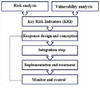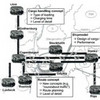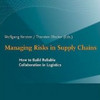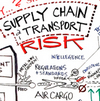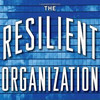 What does it mean to be a resilient organization? That is the topic of The Resilient Organization, written by Liisa Välikangas and subtitled How Adaptive Cultures Thrive Even when Strategy Fails. Here, resilience is more than just the ability to meet adversity; resilience as Välikangas sees it, is an essential element of a company’s competitive advantage, consisting of innovation, design or structure, adaptability and strength. Blending academic research and managerial insights this book provides a different look at resilience from a perspective that is quite different from the usual definition of resilience as a mostly operational attribute.
What does it mean to be a resilient organization? That is the topic of The Resilient Organization, written by Liisa Välikangas and subtitled How Adaptive Cultures Thrive Even when Strategy Fails. Here, resilience is more than just the ability to meet adversity; resilience as Välikangas sees it, is an essential element of a company’s competitive advantage, consisting of innovation, design or structure, adaptability and strength. Blending academic research and managerial insights this book provides a different look at resilience from a perspective that is quite different from the usual definition of resilience as a mostly operational attribute.
What is resilience?
In her book Liisa Välikangas’ begins by referring to a 2003 article in the Harvard Business Review, “The Quest for Resilience” that she co-authored with Gary Hamel, and where she writes about resilience as a response to turbulent enviroments. Resilience, so the article, refers to a capacity for continuous reconstruction, and Välikangas sees resilience as a strategic much more than an operational ability.
Most importantly perhaps, she sees resilience as inextricably linked to sustainability, where true resilience can only be achieved through sustainable practices, and the book is a call for reforming resilience from a way of returning to a balanced state to a way of sustaining a balanced state. In such a state crises simply don’t occur, because they will be met and overcome (with resilience) even before they can manifest themselves.
Resilience, then, is seen as a facilitator or a catalyst for change, not as a means for quick recovery, even going further than Sutcliffe and Vogus in their Organizing Resilience, and Välikangas shows how “resilient” companies have managed the change despite the turbulence they may be in, while “not so resilient” companies have failed. Be that as it may, that is not my view of resilience.
Resilience I and Resilience II
Välikangas is aware of the popular notion of what resilience entails, namely the ability to bounce back, to make a recovery, or to persist during a crisis. This she calls Resilience II. Her new proposed notion of resilience, however, entails taking timely action before the misfortune has a chance to wreck havoc. This she calls Resilience I.
Välikangas also introduces what she calls strategic resilience, which supersedes both resilience I and resilience II, namely
the capability to turn threats into opportunities prior to their becoming either
Thus, resilience is not simply about having a highly competitive strategy; it is about the company’s capacity to benefit from unlikely events, which could have turned into threats, but instead turning them into opportunities. It is about the capacity to take advantage of serendipity, to take advantage of involuntary sagacity.
Basically then, resilience is not just bouncing back, it is skipping past something you otherwise would have had to bounce back from, perhaps a sort of preemptive resilience (the latter definition being my words, not Välikangas’).
Operational versus strategic resilience
Välikangas draws a clear line between strategic resilience (defined above) and what she calls operational resilience, which is a defensive rather than offensive capability, and this type of resilience is seen as
the capacity to sustain threat and to accomplish accident recovery
While this kind of resilience can serve very well as the antidote for a sudden shock or jolt, it cannot combat long-lasting organizational decline, she says. That is why strategic resilience is needed, aimed at preventing the organization from falling into decline, and ultimately ensuring that crisis is averted before it can develop, as Cristophe Roux-Dufort describes in his Devil is in the Details.
Basically then, strategic resilience becomes a means for survival. Operational resilience can only sustain you for so long, and I’m temped to use a Norwegian saying here, whereby operational resilience would be described as “peeing your pants”: It’s nice and warm for a while, but it doesn’t last long.
Tests for resilience
Resilience, so Välikangas is a matter of strategy and its consequences. Resilience can only be obtained over time, by successfully applying the right strategy. Resilience is not a one-event quality, it must prove itself time and again. That is why she devised three tests of resilience:
- Competition – a company that has survived a competitive threat is by definition resilient (at that point in time).
- Legitimacy – the degree to which a company that has a legacy (history) and institutional depth (how embedded and interwoven into the society it is) determines the degree of resilience a company has.
- Toughness – a company that has experienced and overcome hardship and resource scarcity is resilient.
“Resilient” responses to future challenges
After reading the book I am compelled to rename the the title of Välikangas’ book. It should have been titled The Sustainable-Competitive Organization (or similar), because that is what it is about, to remain competitive, while at the same time being sustainable and socially responsible. Nowhere is this more apparent than in a table meant to highlight future issues:
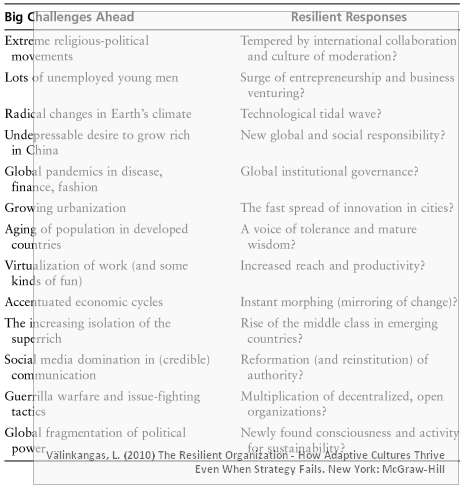
That notion of sustainability is something that companies definitely need to consider, if they are to survive in the long term.
Critique
What does it mean to be a resilient organization? After reading this book, frankly, I don’t feel that I have come closer to an answer. While this undoubtedly is an excellent academic discourse on resilience that embraces all possible facets of the subject matter, drawing on an impressive and wide body of knowledge, it doesn’t provide a clear direction.
After reading Ted Goranson’s book on The Agile Virtual Enterprise I knew quite well what constitutes an agile enterprise; after reading Liisa Välikangas book on The Resilient Organization I don’t know equally well what constitutes a resilient organization. The book starts off well and keeps the reader engaged, but somewhere in the middle I got lost in all the sidetracks, textboxes, examples, sidebar notes, case studies and different perspectives and related terms that Välikangas brings to the table, there was just too much of it.
Välikangas brings together many ideas and thoughts on resilience that are worth pondering, but perhaps too many. Each chapter spreads out in a different direction (actually many different directions) and is a discourse in itself, where I found it hard to connect the dots between the chapters. Some even seemed completely out of context. This may be caused by some chapters or parts of chapters having been previously published as articles, and now put together to make a book, something that doesn’t always turn out well.
I know what kind of organization she wants to create, an organization that is innovative, robust, adaptable and strong, an organization that is engaged, competitive and strives for success, and maybe she is right that when an organization is all this it will also be resilient…or maybe it is vice versa, that being resilient implies the above. Maybe it’s just me, or maybe it’s just semantics, but that is not how I view resilience. In my world, resilience has a very specific and perhaps narrow definition, and I’m much more in line with the Australian view on Organisational Resilience.To me, one of the major driving forces in building resilience is adversity, and I didn’t find much of that in this book.
Conclusion
For anyone interested in a deep-dive into what business strategies that promote an enterprise that is innovative, robust, adaptable and strong, this book is highly recommended reading. It is also perhaps a book much more suited for rethinking organizational strategy towards greater sustainability than for creating organizational resilience; at least that’s what I think.
Perhaps the best way to describe Välikangas view of resilience is to take Porter’s “competitive advantage” and add “sustainable” in front, thus creating sustainable competitive advantage. That is in my opinion what the whole book is about, not resilience. Admittedly, maybe I am the one who is mistaken, and this is how resilience is really meant to be understood. What do you think?
Reference
Välinkangas, L. (2010) The Resilient Organization – How Adaptive Cultures Thrive Even When Strategy Fails. New York: McGraw-Hill
Author links
- linkedin.com: Liisa Välikangas
Buy this book
- amazon.com: The Resilient Organization
Related posts
- husdal.com: Resilient Organisations
- husdal.com: The Resilient Enterprise

